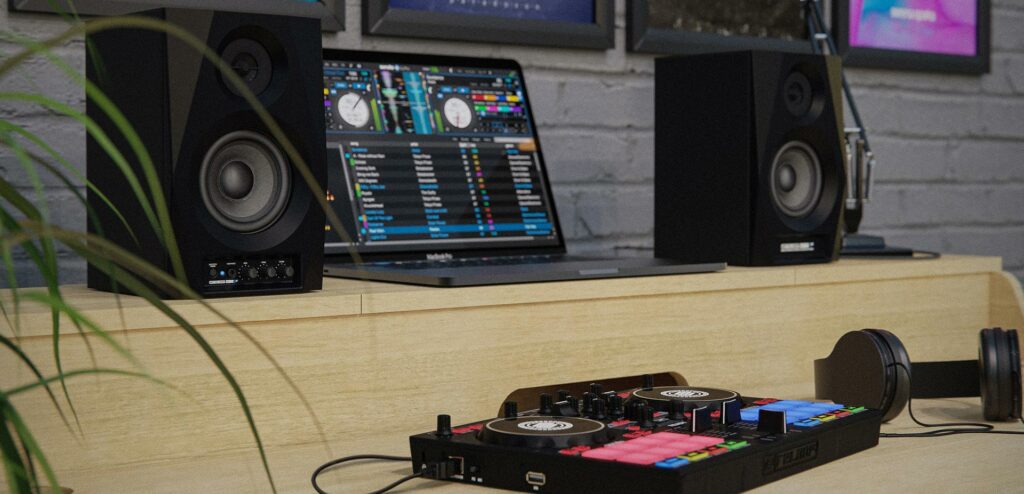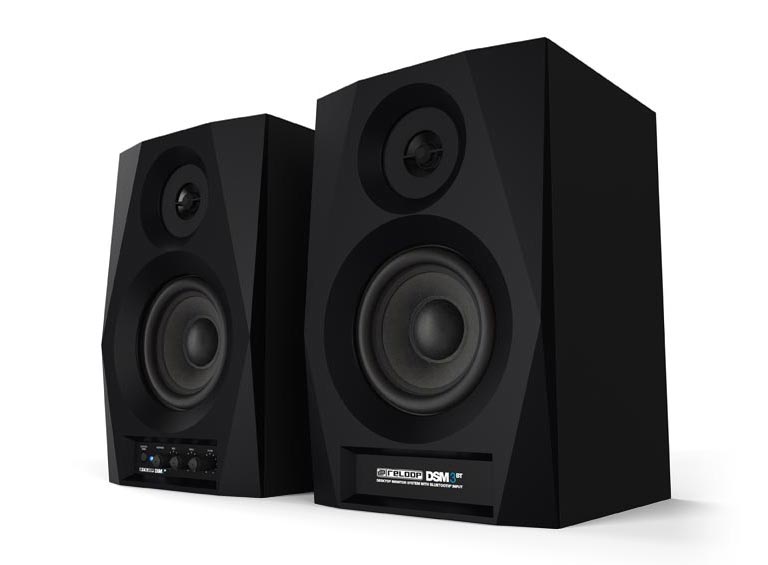Reloop’s entry-level desktop monitors help make getting started with DJing or production more affordable. Greg Scarth puts them to the test.

Music can be an expensive pursuit. Anyone who’s built up a decent vinyl collection, started out on the road to becoming a DJ or put together a home studio setup will attest to the fact that initial costs can quickly spiral. Reloop’s DSM-3 BT monitors are an attempt to ease the financial burden on newcomers to DJing and production, offering entry-level studio/DJ sound at an affordable price. At under £140, they’re one of the cheaper options on the market, but we’ve come to trust the Reloop brand over the years, so we were keen to hear what they have to offer.
The DSM-3s are active monitors, meaning they have built-in amplifiers, much as you’d expect to find in high-end studio speakers. However, there are a few obvious ways in which costs have been kept down in their production. Most notably, only one of the speakers contains all of the amplifier circuitry and associated electronics. The left-hand speaker, which Reloop refer to as Monitor 1, accepts the power cable and unbalanced audio input over a pair of RCA sockets. On the front, you’ll find . Monitor 2 is a more simple, ‘passive’ speaker, which accepts a pair of speaker cables which link it to the back of Monitor 1, connecting the sound without the need for separate amplifier circuitry and power connections. It’s a relatively common approach which works effectively as long as you avoid placing the speaker cable too close to mains power cables, which can lead to unwanted hum.

Setup of the DSMs is simple, although the user’s manual is a little contradictory in places, describing the DSMs as ‘desktop monitors’ while also advising them to be placed on stands, then offering advice on how to place them above a mixing console in a ‘mid-range installation’. It seems extremely unlikely that many users would pair small entry-level monitors with a full-sized studio mixing console, so it’s probably best to be pragmatic here and accept that desktop placement of the DSMs is fine. A pair of angled acoustic pads would be a nice upgrade for pointing the tweeters up to ear level, as there is a clear difference in sound when doing so.

Expectations always have to be adjusted based on the price point, but we’re open-minded when it comes to gear aimed at beginners, and the sound of the DSM-3s is good, with nice punchiness and bass response down to around 80 Hz, which is acceptable for a 3.5-inch woofer. There is a 3.5mm socket on the back of Monitor 1 which allows you to connect to a subwoofer if you have one, but we’d suggest that it might be wiser to go for a bigger pair of monitors rather than trying to upgrade the compact DSM-3s with a sub. Overall though, the sound of the DSM-3s is impressive for their size: clear and revealing enough to work for production, punchy and loud enough to work for DJ practice. The last word in clarity or powerful enough to rock a house party? Definitely not, but that’s not really what we’d expect here.

Overall, the DSM-3s are a great value option for anyone getting started with making music or learning to DJ. They’re easy to set up, well built and stylish in a slightly angular, almost retro way. The feature set is about as simple as it gets, but that’s not a bad thing. Simple tone controls on Monitor 1 allow you to adjust bass and treble if necessary to compensate for the response of your room, while the single volume control avoids the need to balance levels of the two speakers independently. Bluetooth isn’t as high quality as a wired connection, but the option to hook up wirelessly adds convenience for listening to music from a mobile device. At under £140, the DSM-3s help you get started without breaking the bank.
Greg Scarth
More info/buy